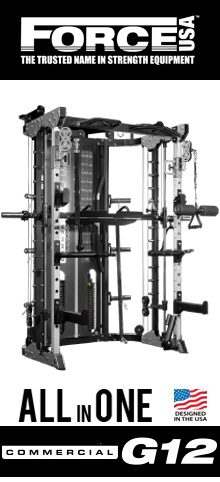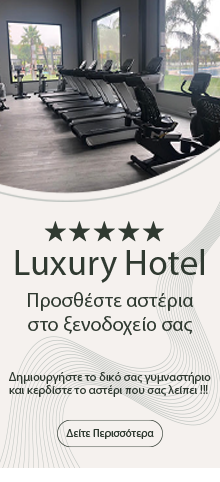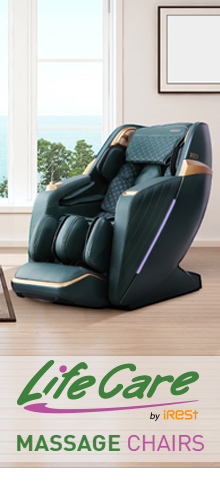Exercise Bike Types
If you are considering an exercise bike for your home gym, you are in the right place! We have gathered here everything you need to know in order to find the best bike for you!
At first glance you will notice some distinct differences in build. Some models resemble racing bikes, while others place you in horizontal position and their seat comes with a backrest. The basic exercise bike types are the following three:
Upright Bikes
Also referred to as a static exercise bikes, this is the most common type of home fitness equipment. The body's position when exercising is similar to a regular bicycle. Upright exercise bikes are frequently the most economic option for the home and are a great entry level option for beginners. An upright bike is also great if you are looking for a compact piece of equipment. They are an excellent low-impact machines that will improve muscle tone, strengthen your legs and also provide a great cardio workout.
Recumbent Bikes
Recumbent bikes provide a similar type of workout to the upright exercise bike, but allow you to sit in a position which supports the back. The choice between an upright or recumbent exercise bike normally centres on exercising comfort, since recumbent seats resemble a chair rather than a saddle. People who are recovering from knee or back injuries also seem to benefit from a recumbent rather than upright bike. The focus of the exercise tends to be slightly more on the glutes and has slightly more impact on the lower stomach muscles compared to an upright bike.
Spin Bikes
If you regularly cycle to work or are training for an event, we highly recommend buying a Spin bike. They have a greater range of resistance levels compared to the traditional bike, which simulates the gears and hills when using a road bike outdoors. These home training bikes are great for more vigorous workouts and training. The saddle is generally as high as the handle bars and the flywheel is much heavier, granting smoother motion.
What you should pay attention to, before making your choice
Resistance Levels
In general having a larger number of resistance levels on a machine is better than only a few. The higher number of resistance levels will give you a greater range of resistance. However, bike ‘A’ with 20 resistance levels might not offer more resistance than bike ‘B’ with 10 levels (each level on bike ‘B’ may just be spread further apart). So, in general, it is worth checking how many resistance levels a machine has, but we would not recommend using the number of resistance levels on a machine as an indicator of quality.
Flywheel
The flywheel weight is measured in kilograms. It’s an important factor which effects both the resistance and smoothness of a bike's movement is. In general, the higher the flywheel weight the better. Some manufacturers can list inflated flywheel weights so it’s also good to check the total weight of the machine. If the total machine weight looks suspiciously low for the flywheel weight advertised, then perhaps you should reconsider.
Maximum User Weight
This is a simple but important factor, useful to indicate the quality of the bike frame. For a example a maximum user weight of over 140 kg indicates a robust bike for regular home use. Commercial bikes often come with ratings that approach or even exceed 180 kg, because they are used non-stop at the gym..
Together with the maximum user weight, take a look at the total weight of the bike. If a bike boasts a high user weight rating, then it follows logically that the frame should be equally robust. If for example you observe a model with a user weight rating of 150 kg and a frame weight of 30 kg, then something suspicious is probably going on.
Make sure you have the right space
On a rule, bikes occupy less space than the other two popular cardio pieces of equipment, treadmills and ellipticalls. This means that even you have limited space, getting almost any bike you like should not be a problem! In any case, be sure to check the assembled dimensions before you buy.
We would caution you to avoid spaces with increased heat or humidity, as they could damage the electronic components of your bike and in some cases even void its warranty.
Details that matter!
Now that you have grasped the basics, we will present you with some details that can make your workout more fun, but also more challenging. So feel free to also research the below.
Different Resistance Types
Let us take a look at the different option of resistance:
- Magnetic Resistance: These bikes use a variable magnetic field to control the level of resistance. This type is the most common among exercise bikes.
- Air Resistance: Thanks to the fan system, you are the one who creates the desired resistance with the intensity of your movement, with practically unlimited levels at your disposal. These bikes often come with moving handlebars as well, so you can effectively engage the entire body.
- Self-Generated Resistance: These bikes do not require a power supply, because all the energy needed for their operation is produced by the user's motion during the workout. This type is usually found on commercial-use models.
Heart Rate Monitoring
There are two ways a bike can measure your heart rate level:
- Handgrip Sensors: Even the most basic bikes come with this feature. This data should not be used for medical purposes! In order to get a more accurate read, your palms should be wet and your grips firm on the the sensors. This can be tricky while you are running, so it is probably best to reduce your peddaling speed temporarilly.
- Wireless Chest Strap: Higher quality bikes are usually compatible with a wireless chest strap and even offer workout programs based on this metric. The chest strap is more accurate than the hand sensors, but it should still not be used for medical purposes. Finally, thanks to the HR programs, an elliptical can adjust the difficulty level depending on your heart rate level to help you achieve your goals.
So which bike is best for me?
Choosing the right bike to fit your goals is very important. Exercise bike workouts can improve cardiovascular fitness, tone muscles and burn fat. So how to choose the best exercise bike for you? Start by thinking about your fitness goal:
My goal is weight loss
Most upright bikes come with workout programmes specifically designed to help you burn fat and lose weight. The programmes will help you to stay motivated and will display your progress throughout your workout. If your budget can stretch to an upright exercise bike with a heart rate chest strap it’ll enhance your training experience and help you to burn fat more efficiently.
Another thing to consider is that upright bikes occupy the least space of any cardio fitness equipment. So if you don't have much room at home, this could be your best option.
We think that the best exercise bike for weight loss should feature:
- A good range of exercise programmes that include interval training.
- Wireless chest strap compatibility. This will allow you to exercise more efficiently.
- A comfortable, padded, seat.
- A sturdy flywheel will provide a smooth ride.
- A high maximum user weight. Your weight may be comfortably within the user weight guidelines but they also indicate the build quality of the machine.
My goal is a low impact workout
Recumbent bikes provide the best low impact workout. The seat offers full back support and encourages a better posture than upright or training bikes. This is better for the long term health of the lower back. Your knees and ankles also have much less weight exerted onto them with a recumbent cycling position. This means they are less likely to be strained or injured than other forms of exercise.
Quality recumbent bikes should feature::
- A large padded seat which is fully adjustable.
- A good range of exercise programmes that include interval training.
- Wireless chest strap compatibility. This will allow you to exercise more efficiently.
- If you are looking for a bike for an elderly or unstable user make sure it has an easy step through feature and handles for support.
- A high maximum user weight. Your weight may be comfortably within the user weight guidelines but they also indicate the build quality of the machine..
My goal is to train for competitive cycling
If you are training for a cycling event, spin bikes will provide you with the best alternative to cycling outdoors. Don’t let bad weather put you off your training plans. Spin bikes allow you to use a racing style posture and are great for sprint, interval or endurance training.
These bikes are often used in gym cycle classes, with high-intensity interval workouts, led by a coach. These classes use a mixture of resistance and changing seat positions to ensure the workout is challenging and improves fitness quickly. They have a broad range of resistance and heavy flywheels. The seat and handlebars should be fully adjustable to offer all users a comfortable riding position.
We believe that quality spin bikes should have these features::
- A large fly wheel size (minimum 15kg) to provide a smooth ride.
- Emergency stop breaking feature.
- Fully adjustable saddle and handlebar positions.
- A high maximum user weight. Your weight may be comfortably within the user weight guidelines but they also indicate the build quality of the machine.
Some last suggestions
After you have familiarized yourselves with all technical specifications and before you make your final choice, please be sure to consider not only your own needs, but also those of the rest of your family. For example, if you weigh 90 kg but a family member weighs 115 kg, then choosing a model with a user weight rating of 110 kg would be a mistake. Conversely, a less robust bike will not likely cover the needs of a large family, even if all members are light of weight. These are common mistakes that you can easily avoid.
 English
English
 Ελληνικά
Ελληνικά







